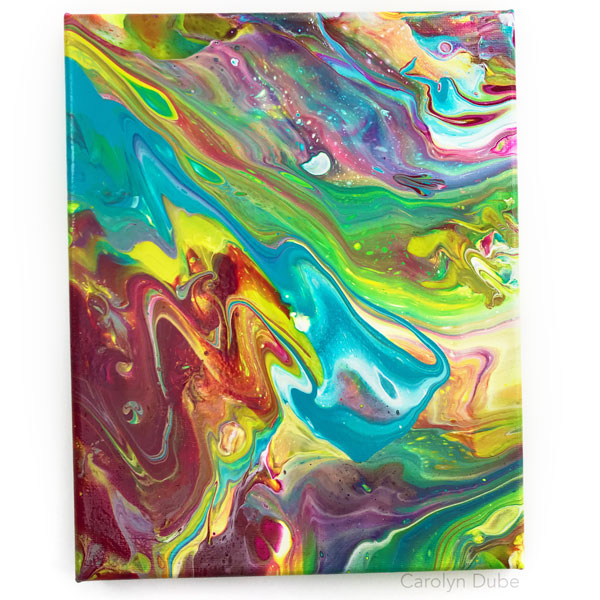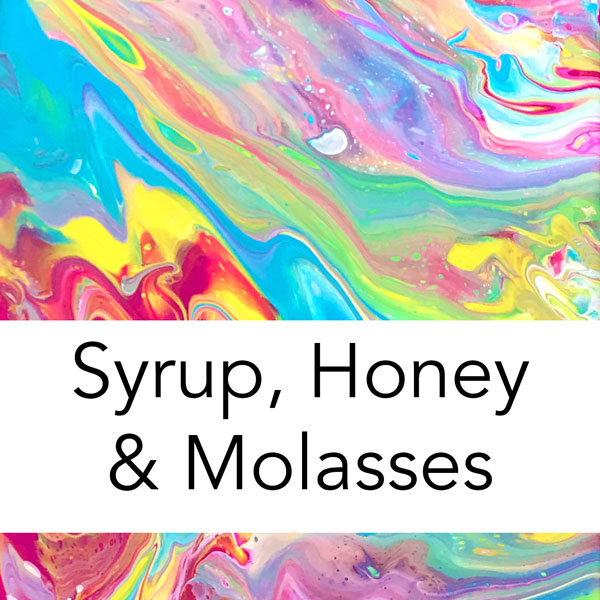
Welcome to our first lesson! This is all about getting to know your paint and pouring mixture’s thickness, or viscosity. How thick or thin the paint mixture is has a huge impact on what happens when you pour it.
What pouring medium should you use for this lesson? Whichever one you have next to you. I’ll be using Deco Art pouring medium in this lesson, but the information and techniques apply to all pouring mediums. The important thing is that you’re playing, not what type of medium you’re using.
Insert Video-
Video Password: Every video in the workshop requires a password, it is the same password for every video and it is listed directly under the video so you don’t have to remember a thing. You can copy and paste it, and be sure that there are no blank spaces. The computer elves are very particular about that.
Video Password:PPFUN
Watch/Download on Vimeo. Need help downloading or with other technology issues? Check out the technology help page here.
Now it’s your turn to play. Mix up your paints and get a feel for their thickness, is it syrup, honey, or molasses?
Questions? Leave a comment here on the lessons page or in our Facebook group. Not a member of the group yet? Go here to see how to join.
Supplies Used (and as always substitute with what you have on hand or prefer to use)
Pouring medium: Deco Art
A palette knife (I used a metal Palette Knife and any plastic ones do the same thing for this technique set of plastic palette knives)
How can you tell if you paint is syrup, honey, or molasses? Put similarly sized blobs of paint on a canvas at the top, then tip it. You’ll see the more fluid the mixture, the faster it runs. The yellow was like syrup and the red and blue were a very thick honey, almost a molasses.
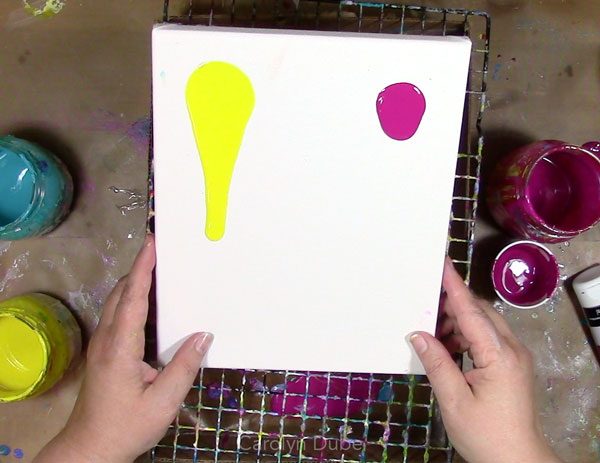
Add the paints, confetti style to the canvas.
When you’re pouring a painting, the more fluid your paints, the more they flow, slide, grow. So if you want your paint to stay where you put it, then you want to work with more honey and molasses mixtures. If you want the more flowing and fluid look, then you want to go more for syrup. Because what I used was so thick, when I put it on the canvas it didn’t run to the edges, even though there is a lot of paint on it.
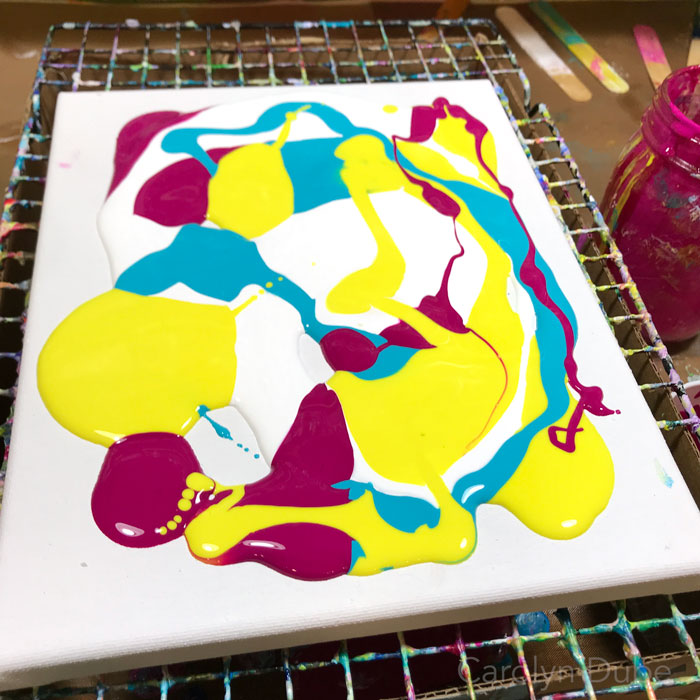
Every time you move the paint, in any way, the colors mix just a touch. If you want cool color effects, when you swipe you want to be like a bug on the surface of water, just skipping along the top, barely breaking the surface. One swipe here and there can create beautiful colors, the way the green appeared. But….
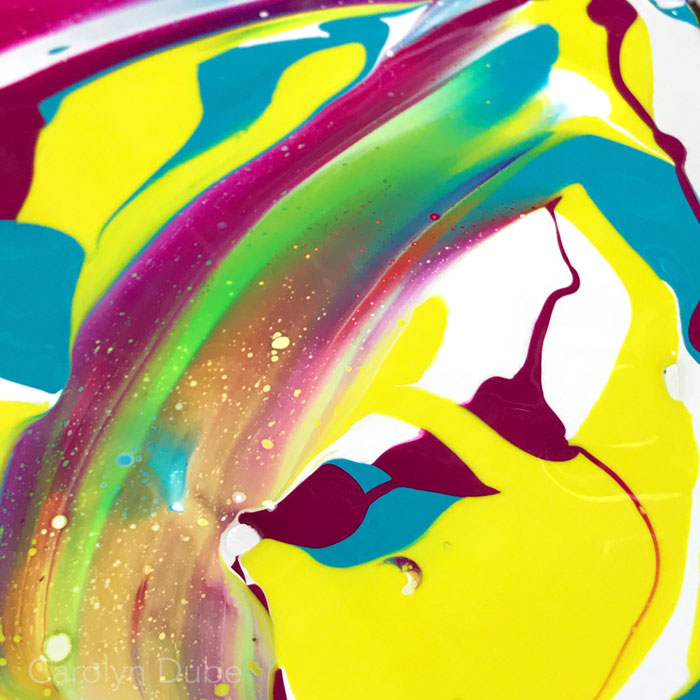
If you work an area over and over, you will be mixing the paint and it will head towards mud if you have any Fremeny colors mingling together.
Why were there so few cells? I didn’t add any dimethicone or silicone to the paints.
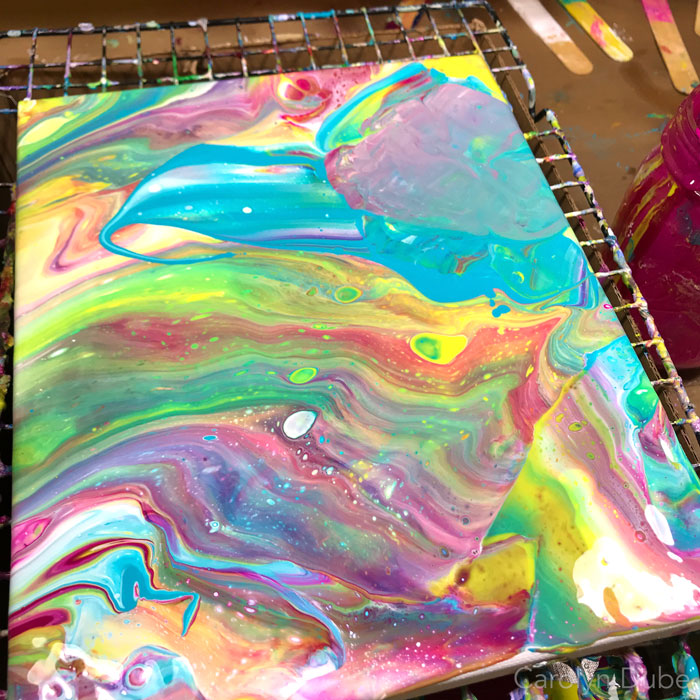
If you find that part of the paint has gone to a color you don’t like, as I created a bit of muddy purple, you can add more paint on top of it and start moving that around.
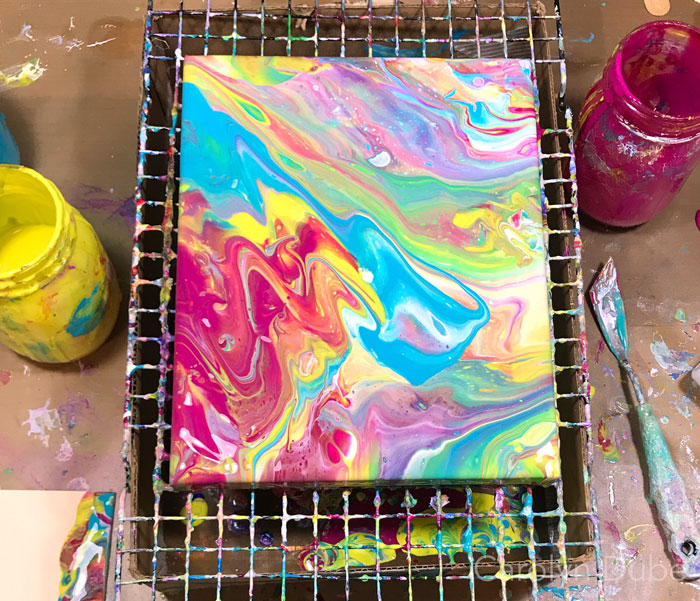
Once you’re finished moving the paint around, let it drip in the box for 10-30 minutes. Once it is done doing most of its dripping, then you can move it to a drying rack.
Wipe the excess paint off the underside of the frame using your hand or a palette knife. Check for any bubbles. If you see any, pop it with a pin or toothpick.
Let it dry on a level surface for approximately 24 hours.
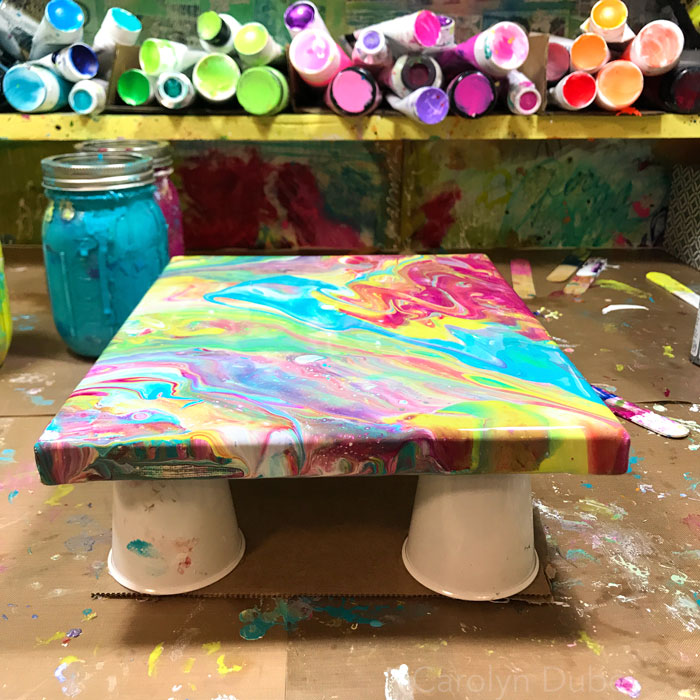
Here’s the canvas, completely dry.
